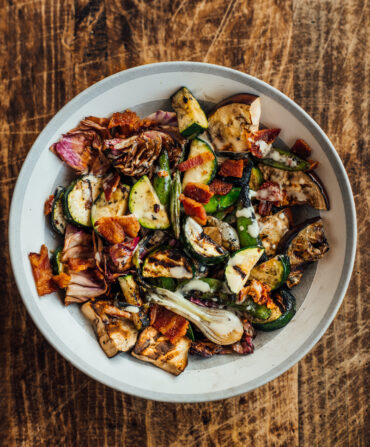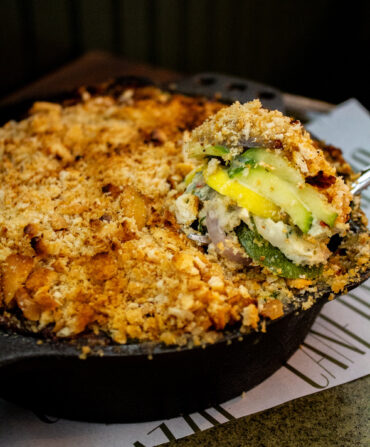Serving fresh seafood at a restaurant sometimes means a chef has to get creative. “When you’re butchering seafood, there are often random pieces not big enough to serve as an entrée, and we have to figure out a way to utilize those,” says John Zucker, the executive chef at Cru Café in Charleston, South Carolina. His risotto, with Thai and Italian influences, solves the odds-and-ends problem for him. “I love risotto,” he says. “So it was a natural solution.”
After honing a decidedly French style of cooking at Le Cordon Bleu in Paris, Zucker moved to Las Vegas to work under Wolfgang Puck. “He focused more on California eclectic cuisine with lots of different influences, not just restaurants with specific themes,” he says. “So, when I moved to Charleston to open my first restaurant, Sonoma, I had a lot of European, pan-Asian, and Caribbean influences.” That’s where the risotto first made an appearance. “This recipe has been on my menu in some form for twenty years.”
Zucker admits the recipe is tricky, but it can be mastered at home with a little patience. “Add the liquid slowly and work it in with a wooden spoon to release the spices,” he says. “You have to stir constantly and mix the flavors really well. And be sure to pull the fish, mussels, and scallops out of the pan and set aside so they don’t overcook. That’s the key.”








